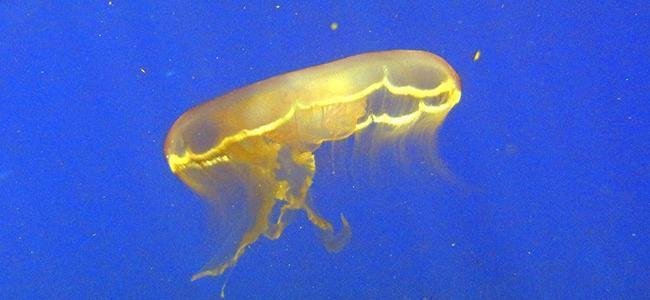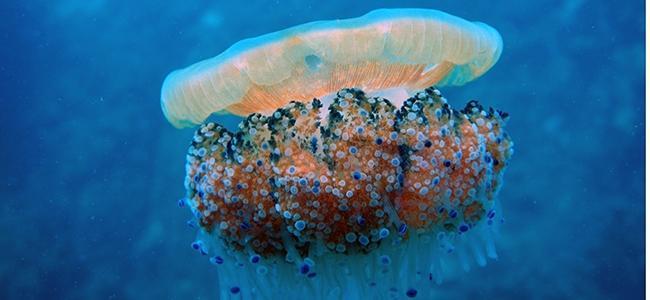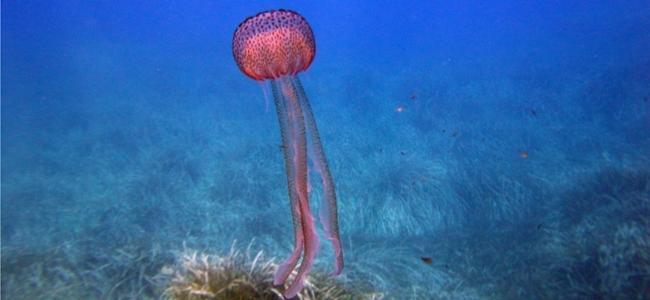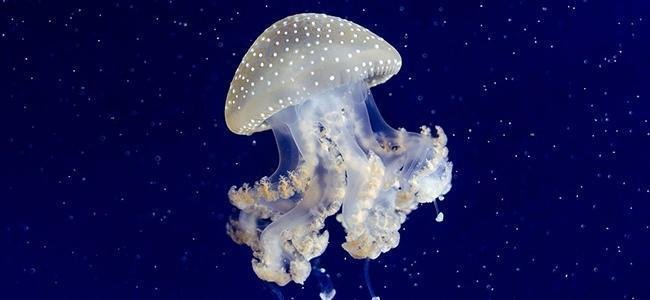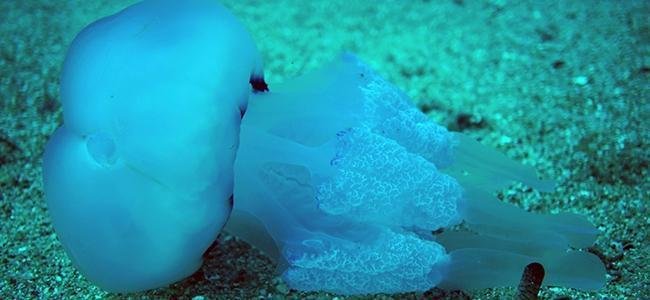The class of Scyphozoans (class Scyphozoa) owes its name to the Greek word 'skyphos' meaning bowl or cup. As a group of species, the Scyphozoa are very long-lived, as the earliest species of this class are thought to date back to the Cambrian period. The Scyphozoans are encompassed within the cnidarians, and we will find in this class the largest species of all cnidarians, such as the Arctic lion's mane jellyfish (Cyanea capillata) whose diameter reaches 2 meters and with tentacles that can reach up to 60-70 meters in length and 220 kilos in weight, or the case of Rhizostoma luteum that can reach up to 40 kilos in weight. Generally, and with the exception of the above cases, the size of Scyphozoans usually ranges from 2 to 40 cm in diameter.
The Scyphozoans have during their life cycle an alternation between the polyp phase and the jellyfish phase, although the polyp phase is usually very reduced in time, and hence they are colloquially known as jellyfish.
One of the distinguishing characteristics of this class is the absence of a veil at the end of the umbrella (body of the animal). Generally, the body of these species have a symmetry based on four or multiples and is formed by a gelatinous substance called mesoglea. In Scyphozoa, the sexes are separate, with female and male specimens. Fertilization is internally, sperm is transported trough currents generated by cilia, to the gastric cavity of the female where fertilization occurs
There are approximately 200 described species, all of them marine, which are classified into two subclasses..
- Coronamedusae. In this subclass is placed the order Coronatae in which there are 6 families described (Atollidae, Atorellidae, Linuchidae, Nausithoidae, Paraphyllinidae y Periphyllidae)
- Discomedusae. This subclass includes the Rhizostomeae order (families Catostylidae, Lobonematidae, Lychnorhizidae, Rhizostomatidae, Stomolophidae, Cassiopeidae, Cepheidae, Mastigiidae, Thysanostomatidae and Versurigidae) and the Semaeostomeae order (families Cyaneidae, Drymonematidae, Pelagiidae, Phacellophoridae andUlmaridae).
